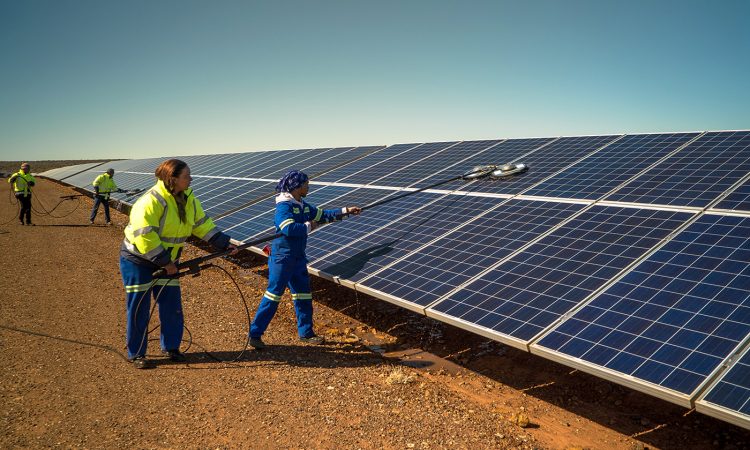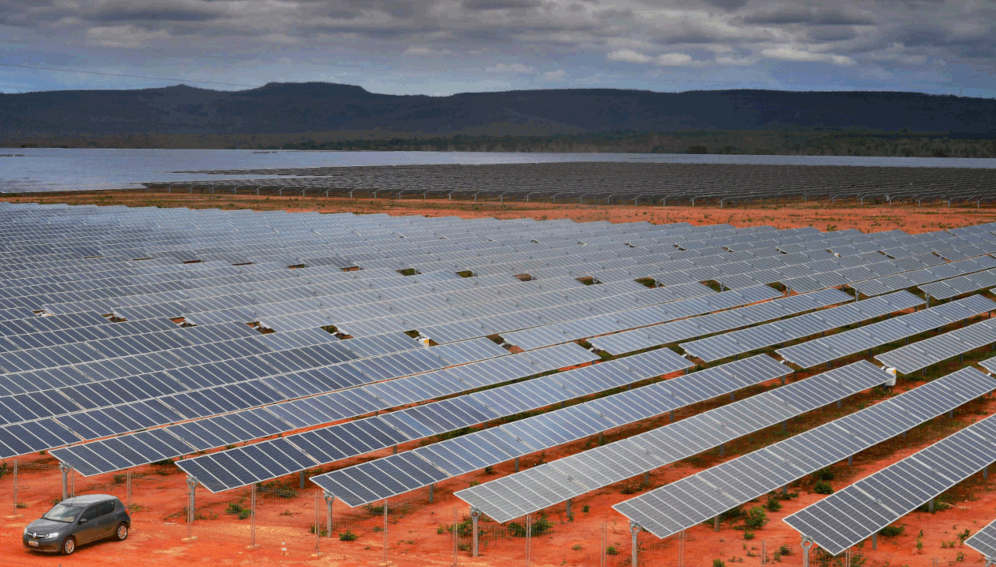Based on a data-driven model of technology and economics, a team of UK-based researchers found that solar photovoltaics has already reached a “tipping point” that means it will likely become the number one power source before 2050 – even without support from more ambitious climate policies.
However, they say that a lack of funding and infrastructure means this may have limited benefits for poorer countries close to the equator, even though they get the strongest sunlight.
“Access to finance may be challenging there, especially for the supportive infrastructure,” says Femke Nijsse, a lecturer at the University of Exeter’s Global Systems Institute and lead researcher in the study published this month in Nature Communications.
In low-income countries, solar can provide small-scale off-grid applications, allowing people far from electricity grids access to electricity, but for large-scale projects and grid infrastructure, a barrier around finance needs to be overcome, according to Nijsse.
“Investors may consider renewables or infrastructure too risky in the poorest countries, especially in countries without prior experience in renewables,” she says.
“International loan guarantees may provide a solution there to establish markets and investor confidence.”
‘Tipping point reached’
Despite this, the world may have already crossed a “tipping point” that will inevitably make solar power a major source of energy by 2050, the researchers from Exeter and University College London (UCL) believe.
“We were interested in finding a sensitive intervention point,” explains Nijsse.
“This could be a possibility for a policy to have a disproportionately large effect on the outcome.

Cleaning solar panels in Ghana. Tommyking751, Copyright: Tommyking751, (CC BY-SA 4.0 DEED).
“What we found is that these policies were in the past, and that for solar, we have already passed a tipping point.”
At the UN climate summit COP28 in Dubai later this month, the research team will present a report, which Nijsse believes will be a comprehensive assessment of climate tipping points and positive tipping points that could help tackle the climate crisis.
‘Cheaper than coal’
Renewables have historically been considered an expensive option, requiring high subsidies or carbon taxes to make them viable, the study highlights.
“However, following a fruitful history of innovation and past climate policy, renewables now increasingly compete with fossil fuels,” it states.
“Whether renewables become the new normal increasingly hinges upon industry and trade development rather than a pure normative necessity to meet carbon budgets.”
According to the International Renewable Energy Agency (IRENA), the cost of renewable energy projects is now cheaper than even the cheapest coal-fired power plants. Between 2010 and 2020, costs for electricity from utility-scale solar power fell 85 per cent, it says.
“Now that solar has become so cheap, policies around costs have become less important, even though a carbon tax still levels the playing field,” adds Nijsse.
“For many countries, important policies now are investing in transmission grids and coordinating innovation policies for grid storage.”
Overcoming barriers
On Monday (30 October), IRENA, along with the COP28 Presidency and the Global Renewables Alliance, launched a joint report at a pre-COP event in Abu Dhabi, which sets out a vision for tripling renewable power and doubling energy efficiency by 2030.
The report outlines policy recommendations for governments and the private sector to increase global renewable energy capacity to at least 11,000 GW, compared with just over 3,000 GW at the end of 2022.

Pirapora Solar Complex, one of the largest in Brazil, with a capacity of 321 MW. The poorest countries lack finance for such renewable energy projects, researchers have said. Credit: CoyoteBR, (CC BY-SA 4.0 DEED).
This, it says, will help keep within reach the goal of limiting global temperature rises to 1.5 degrees Celsius above pre-industrial levels.
Making this happen requires concerted action, says IRENA director-general Francesco La Camera, including addressing “deeply entrenched systemic barriers across infrastructure, policy and institutional capacities stemming from the fossil-fuel era”.
As well as a shortage of finance, the UK study identifies a number of barriers to solar power growth, including lack of stable power grids, weak supply chains, and political resistance from regions facing job losses from decarbonisation.
The researchers believe policies resolving these barriers may be more effective than price instruments such as carbon taxes for accelerating the clean energy transition.
R&D funding
Since solar generation varies according to the time of day, weather and seasons, grids must be designed with this in mind, explains Nijsse, adding: “Government subsidies and funding for R&D are important in the early stages of creating a resilient grid.”
Solar growth will inevitably depend on the availability of finance, but at present low-carbon finance is highly concentrated in high-income countries.
“Even international funding largely favours middle-income countries, leaving lower-income countries – particularly those in Africa – deficient in solar finance despite the enormous investment potential,” Nijsse adds.
Jessica Jewell, an associate professor at Chalmers University, Sweden, says the Exeter-UCL research is important because “it rightly points out that from now on or at least in the near future, the growth in solar power is not so much constrained by costs but by other factors – ranging from grid integration, to cost of capital, to political opposition”.
She adds: “It also points out that future policies should be directed at reducing these barriers rather than further subsidising solar power.
“This is a reasonable recommendation, though some form of financial support for solar power may still be necessary, given the volatility of electricity markets and prices.”
This piece was produced by SciDev.Net’s Global desk.

 Join Daily Trust WhatsApp Community For Quick Access To News and Happenings Around You.
Join Daily Trust WhatsApp Community For Quick Access To News and Happenings Around You.


